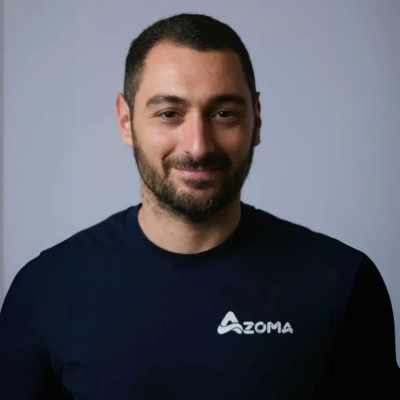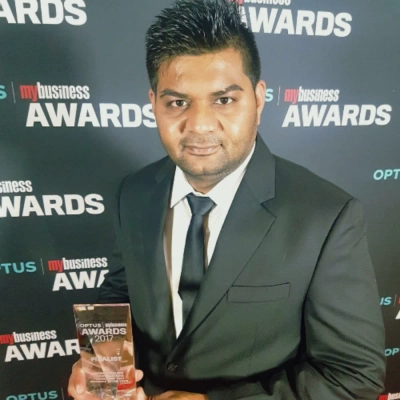20 Proactive Measures for Maintaining Aeo Effectiveness as Search Engines Evolve
As search engines continue to evolve, maintaining AEO effectiveness requires proactive measures and strategic adaptations. This comprehensive guide presents X essential strategies, backed by insights from industry experts, to keep your content relevant and visible in the ever-changing digital landscape. From adapting content strategies to leveraging emerging platforms, these actionable tips will help you stay ahead of the curve and optimize your online presence for maximum impact.
- Adapt Content Strategies to Search Behavior
- Pivot to Bottom-Funnel Pages for Conversions
- Build Adaptable Foundation for AEO Success
- Leverage Reddit for Brand Mentions
- Focus on Citation Patterns Across Platforms
- Align Content with Audience Needs
- Diversify Content Formats for Engagement
- Create Undeniable Source of Truth
- Implement E-E-A-T Principles for Sustainable Growth
- Write Conversational Answers to Real Questions
- Update Existing Content for Relevance
- Reformat Content for Featured Snippets
- Shape Answers for Zero-Click Environments
- Optimize Brand Mentions with Consistent Adjectives
- Be the Go-To Answer for AEO
- Use AI to Forecast Search Trends
- Leverage Structured Data for AI Visibility
- Implement Robust Tracking Systems
- Create Comprehensive Posts for User Intent
- Evolve Keyword Research for Topic Clusters
Adapt Content Strategies to Search Behavior
For me, maintaining AEO readiness is about recognizing that the search landscape is never static. What worked last year for featured snippets or structured data may not carry the same weight today—especially as AI-driven overviews and answer engines evolve. Expanding into multiple formats like video, imagery, and concise written content has also been crucial in matching diverse search intent.
My approach has been twofold. First, I focus on future-proofing technical foundations: building content around topical relevance, ensuring structured data is implemented correctly, and consistently earning highly relevant brand mentions. Second, I adopt a test-and-monitor mindset. I track how clients surface in AI overviews, featured snippets, and conversational queries, then run controlled optimizations to see what works—whether that's refining schema properties, re-framing content to directly answer intent-driven questions, or experimenting with formats like FAQs and comparisons.
What's worked best is staying close to real search behavior rather than chasing every algorithm update. By analyzing platforms like Reddit to uncover emerging queries and shifting intent, I can adapt content strategies quickly. This approach has consistently kept clients visible, even as answer engines change how users discover and interact with results.
Pivot to Bottom-Funnel Pages for Conversions
Our approach to maintaining AEO effectiveness involves continuously monitoring algorithm changes and quickly pivoting strategies when needed. When Google rolled out its AI Overviews earlier this year, we initially shifted from long-form content to creating targeted answers but found better results by ultimately focusing on bottom-of-funnel pages with clear intent. This strategy adjustment moved us from an "educate and capture" model to a more effective "solve and convert" approach, which actually improved lead generation despite reducing overall traffic volume. Regular performance analysis and willingness to abandon underperforming strategies are essential to staying effective as search capabilities evolve.

Build Adaptable Foundation for AEO Success
The key to maintaining Answer Engine Optimization (AEO) effectiveness amid evolving search algorithms isn't frantically chasing updates but building an adaptable foundation. Search engines constantly change how they surface answers, particularly with AI Overviews, but they consistently reward clarity, authority, and relevance.
I saw this firsthand with a SaaS client whose rankings plummeted when Google began favoring structured, conversational responses. Rather than just sprinkling in keywords, we completely reformatted their content into natural-language Q&As, implemented FAQ schema markup, and connected their answers to established Knowledge Graph entities. The results were striking - within six weeks, their featured snippets returned, and those pages saw a 27% organic traffic increase.
I've found the most effective proactive measures include developing semantic depth around key entities and maintaining current schema markup. Quarterly schema audits are non-negotiable in my workflow because outdated structured data can tank visibility overnight. I also regularly check how our content renders in AI-driven search previews - when answers appear truncated or missing context, that signals we need to refine for clarity.
The most valuable insight I've gained is understanding that AEO isn't a set-it-and-forget-it task but an ongoing conversation with search engines. Commit to clarity, structure, and relevance, and you can adapt to their evolution without completely overhauling your strategy with each update.

Leverage Reddit for Brand Mentions
I wanted to get more mentions for a client in the different LLMs, and it also showed improvement in the organic results and traffic.
So it was quite a simple exercise; we started being active on Reddit, just simply helping and maybe mentioning my client's brand in 10-15% of the different answers we gave on Reddit.
In the beginning, it was tedious as we met the threshold for "spam" on Reddit all the time, but it got easier as we started to gain credibility.
At the same time, we created some ultra-specific FAQs on my client's website and linked them to the footer so it was easy for the crawlers to find them.
It's still in the early days, but it's showing promising results already. On Google's AI overviews, we grew from 12 citations to 45, and ChatGPT now knows who my client is compared to before, where it didn't have a clue.
It all comes back to brand mentions, and as this grows more and we work more with it, it'll grow exponentially. It was an experiment, and it's showing to really work well.

Focus on Citation Patterns Across Platforms
The fundamental shift requires thinking beyond reactive optimization to building adaptive content frameworks that work across multiple reasoning models simultaneously. What most don't realize is that modern AI search isn't just one query anymore—reasoning models now run tens of competitive prompts behind the scenes and examine hundreds of sources before generating a single response. This means the old approach of optimizing for one primary keyword or engine is obsolete. Instead, we need content that can withstand this multi-prompt, multi-source scrutiny by addressing the full spectrum of how customers actually phrase their questions and concerns.
The biggest change we've observed through analyzing millions of AI responses at Azoma is that citation patterns matter more than traditional rankings. Our data shows ChatGPT draws 47.9% of its citations from Wikipedia and 11.3% from Reddit, while Google AI Overviews pulls 21% from Reddit and 18.8% from YouTube. What's interesting is that beyond these common sources, each industry has its own citation ecosystem—in categories like protein supplements, we've found obscure domain-specific blogs becoming major citation sources. The approach now is less about fighting for the top ranking and more about building presence across the 10-15 sources that AI engines already trust in your space. We've seen that authentic participation in these platforms, like transparent employee contributions to relevant Reddit discussions, often drives better visibility than traditional content marketing because AI systems prioritize conversational, human-generated content over polished corporate messaging.

Align Content with Audience Needs
While many aspects of search mechanics are changing, the fundamentals of marketing remain constant.
In practical SEO terms, this means beginning with audience research. What questions are they asking? What problems are they trying to solve? Then, examine your organizational strengths and create content that meets those needs in a way only you can. Focus on demonstrating your expertise and experience, and your audience will trust you.
Another piece of advice I have is intent matching. It's insufficient to merely target keywords; you must create content that aligns with where the user is in their journey, whether that's exploratory research, comparing options, or making a decision.
When we've implemented this approach with clients - for example, developing informational articles around real student queries for a UK university - those pages not only ranked organically but also began appearing in Google's AI Overviews within three weeks of publication.
It's important to note that Technical SEO remains crucial. AI crawlers are processing the web more than ever, and they need to be able to accurately digest and reproduce your content. Make it easy for bots to navigate your site, and provide them with helpful guidance through schema markup.
Some aspects have changed: the Search Engine Results Page looks somewhat different now, and our search behavior is adapting to the new capabilities (long-tail queries are regaining popularity). However, now is the time to adhere strictly to the core principles of good, sustainable marketing practices: Audience Needs + Organizational Strengths = Sustainable SEO.

Diversify Content Formats for Engagement
Staying ahead of search engine changes requires a flexible approach that prioritizes content diversity and quality above all else. When Google's algorithm shifted significantly, our team found success by working closely with our creative department to enhance our content strategy. We systematically integrated custom videos, graphics, and interactive elements across our digital properties rather than relying solely on text-based content. This multi-format approach not only helped maintain our visibility but actually improved user engagement metrics, which search engines increasingly prioritize. The key lesson we learned was that search engines ultimately want to surface content that genuinely helps users, so focusing on creating truly useful content in various formats has been our most successful proactive measure. This strategy has proven more sustainable than chasing specific algorithm factors that might change next month.
Create Undeniable Source of Truth
Hello CMO Times team,
Chasing algorithm updates is a defensive game. Our approach is offensive: become the undeniable source of truth. That's what we built our ARCHITECT™ framework to do - a system that aligns entity control, structured answers, and trust signals to ensure our clients are the citation engines reach for first.
Two moves that keep AEO effective, no matter the changes:
1) Build a "Citation Moat." Answer engines validate with citations. We run a repeatable PR drumbeat—expert roundups, data drops, earned bylines to land 2-4 quality mentions per month. These third-party references are durable trust signals that make our clients' answers the "safe" pick for AI surfaces.
2) Own the Concept, not the Keyword. AI thinks in entities. We publish one structured knowledge hub per core topic, authored by a named expert and kept on a rigorous review schedule. The goal: when an engine models the topic, it recognizes our client as the authority for a wide array of related questions, not just one query.
We verify it's working with simple, CMO-level metrics: tracking the upward trend of AI mentions and citations, monitoring share-of-source in Perplexity/ChatGPT/Gemini, and attributing new leads from AI-driven answers.
Daisy Watkins | Founder, DW Conceptz
Creators of the Lumapath AEO Blueprint and ARCHITECT™ framework.
Bio: We help SMBs and healthcare brands become the cited authority for AI-driven search.
"We don't chase keywords—we train the algorithms to cite us."

Implement E-E-A-T Principles for Sustainable Growth
Maintaining AEO effectiveness requires constant vigilance and adaptation to search engine evolution. When Google's core algorithm update affected half of our clients' rankings, we implemented a comprehensive strategy focused on E-E-A-T principles and developed content that prioritizes user value over algorithmic manipulation. We also found that proactively educating clients about technological changes helped build trust during uncertain times. This approach not only restored rankings but transformed a potential crisis into an opportunity for deeper client relationships and sustainable growth.
Write Conversational Answers to Real Questions
ChatGPT said:
I try to keep things simple and think about how people actually ask questions. Instead of stuffing answers with keywords, I write them the way I would explain something to a friend over coffee. For example, when working on a guide about setting up WordPress, I added short, direct answers to common questions like "How do I change a theme?" or "Where do I find plugins?" in a conversational tone.
What helps me most is checking how people phrase their questions in places like Reddit, Quora, or even support chats. That gives me a real sense of how they speak and what they expect. I also go back and update older content to match those patterns, so it stays relevant as search engines get smarter. The proactive part is less about chasing every algorithm change and more about making sure the content feels natural and useful for real people first.

Update Existing Content for Relevance
To maintain AEO effectiveness, I regularly review and update existing content to keep it relevant and aligned with user intent. We know that search engines value fresh, accurate information, so revisiting existing content can often have more impact than creating new pages. During this process, I refine keywords, improve readability, and add new insights or data. This approach has helped me maintain high organic rankings and appear in AI results.

Reformat Content for Featured Snippets
To maintain AEO effectiveness as search evolves, I focus on speed, structure, and snippet-specific optimization. The method is simple: take pages already ranking in the top 10 and reformat them to directly answer featured snippet queries.
What works best:
1. Identify keywords with featured snippets where your page ranks 2-10.
2. Rewrite the content to match the format of the current snippet (e.g., paragraph, list, table).
3. Place a direct answer immediately under a heading that includes the search phrase — usually an H2.
4. Trim filler. Short, clear, answer-first writing works best.
5. Use schema (FAQ, HowTo) to reinforce structure when relevant.
Why it works:
Search engines prioritize clarity and structure. Matching the snippet's format and improving linguistic precision boosts your chance of being pulled in. This strategy can be effective even without changing the page's overall rank.

Shape Answers for Zero-Click Environments
My approach centers on shifting strategic focus away from traditional traffic volume metrics toward building a comprehensive cross-channel presence. The most effective proactive measure has been guiding clients to create content specifically designed for zero-click search environments, where the goal is to shape the answers that search engines surface directly to users. This strategic pivot acknowledges that AEO success now depends more on being the authoritative source that gets referenced rather than being the destination that gets clicked. By focusing on content that provides value even when consumed within search results, we maintain relevance as search engines continue to evolve.

Optimize Brand Mentions with Consistent Adjectives
Brand mentions using the same specific adjectives help optimize your brand for AI search. For example, if you search in ChatGPT for the best luxury hotel marketing agencies, Mediaboom will appear in the results.
The goal of this strategy is to consistently use the same adjectives on your website and other websites. This ensures that AI search algorithms pick up on these descriptors when users search for brands with specific adjectives. The more consistently you implement this strategy, the more likely you are to appear at the top of search results.

Be the Go-To Answer for AEO
If you're just getting started with AEO (Answer Engine Optimization), the key is simple: be the go-to answer. Focus on creating clear, structured content that directly answers people's questions, keep an eye on AI and SERP updates, and optimize for EEAT (Experience, Expertise, Authority, Trust). Don't forget to regularly update FAQs and "People Also Ask" content; it's a goldmine for visibility. The trick is to think like a search engine: if your content is the best, clearest answer out there, you'll get featured, even as algorithms evolve. You've got this!

Use AI to Forecast Search Trends
My approach to maintaining AEO effectiveness centers on staying ahead of search engine changes rather than reacting to them after the fact. I use AI-powered predictive analytics to forecast shifts in keyword popularity, search volume, and competition patterns before they fully materialize. This allows me to proactively adjust content strategy and keyword targeting in advance of potential algorithm updates. By anticipating these changes, we can maintain consistent performance even as search engines evolve their ranking factors.

Leverage Structured Data for AI Visibility
This is exactly why I've created AEORegistry.com. We use an approach with AI visibility that leverages structured data, which is data specifically written to be read by AIs (not humans). While other larger agencies are relying on content-heavy articles and leveraging outdated SEO strategies not meant for AI, we are literally "speaking AI's language" to help businesses be "seen" by ChatGPT, Perplexity, and others.

Implement Robust Tracking Systems
To maintain SEO effectiveness amid evolving search engines, I've found that implementing robust tracking systems is essential for staying ahead of algorithm changes. We created a custom dashboard that integrates with Google Search Console to monitor keyword rankings, CTR, and impressions for our top-performing content. This strategy enables us to quickly identify and optimize underperforming pages by utilizing strategic long-tail keywords and effective internal linking structures. By consistently applying these tactics to our content, we've seen meaningful improvements in organic traffic and conversion metrics, even during periods of significant search engine updates.

Create Comprehensive Posts for User Intent
Our approach to optimizing website content begins with user intent. We create comprehensive posts that answer the specific questions people are already asking. A strong example is our article on "What are social impact companies?" While it is not always the top organic result, Google consistently features it in the "People Also Ask" section. This placement keeps our brand visible near the top when people search for related queries like "what is a social impact company" or "social impact companies."
This visibility is even more crucial now because Google's AI-generated answers draw directly from these highly ranked resources and display them prominently before any other results. By combining valuable, comprehensive content with strategic calls to action, we are transforming informational searches into meaningful service inquiries that build both authority and opportunity.

Evolve Keyword Research for Topic Clusters
At FATJOE, we've found that maintaining SEO effectiveness requires continuously evolving our approach to keyword research. Rather than relying solely on traditional metrics, we now analyze content already ranking on page one and map comprehensive topic clusters to better align with Google's algorithm changes. This proactive strategy has helped our clients maintain steady rankings even through recent significant updates. By focusing on user intent and natural content development rather than mechanical optimization, we've been able to stay ahead of search engine evolution.





